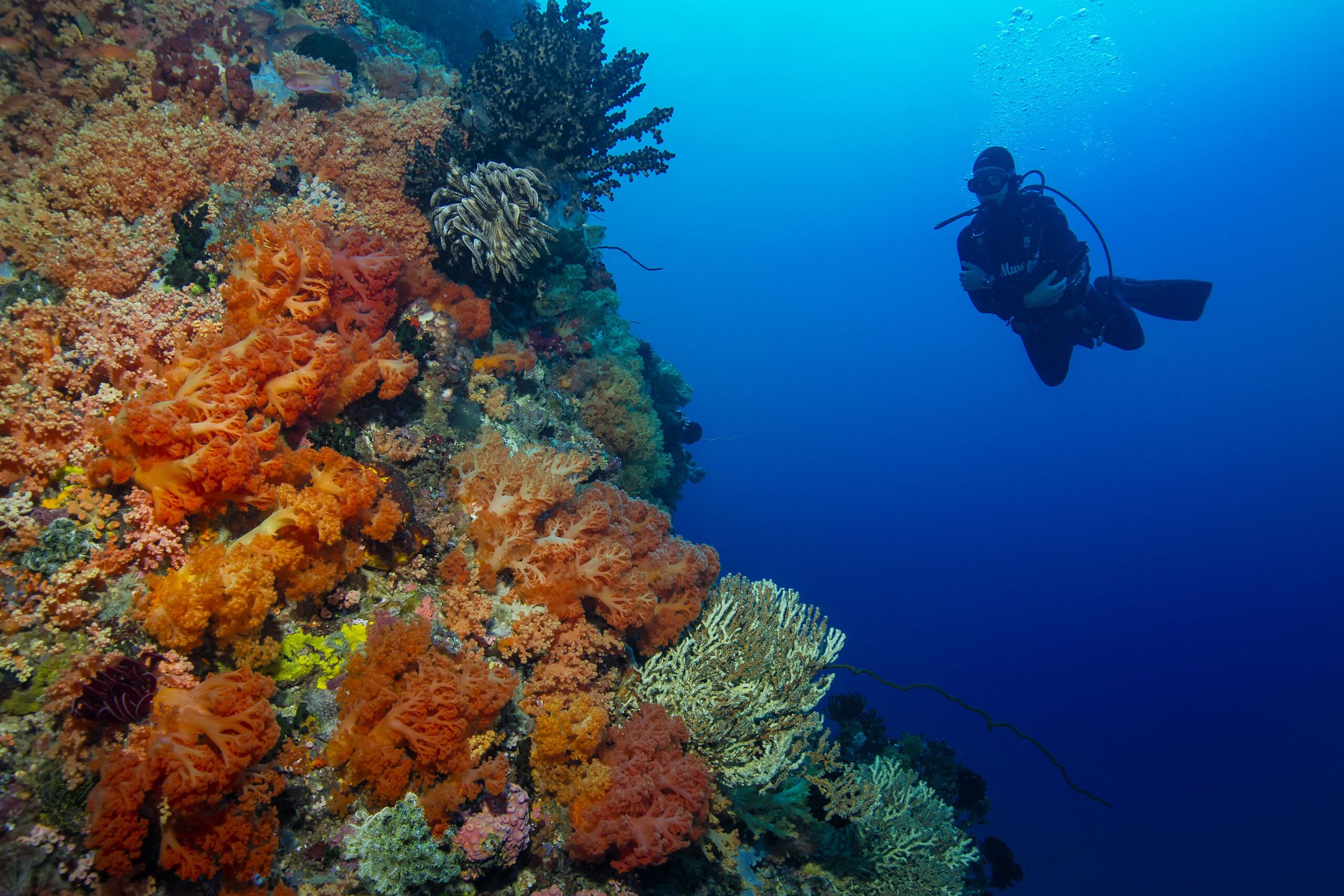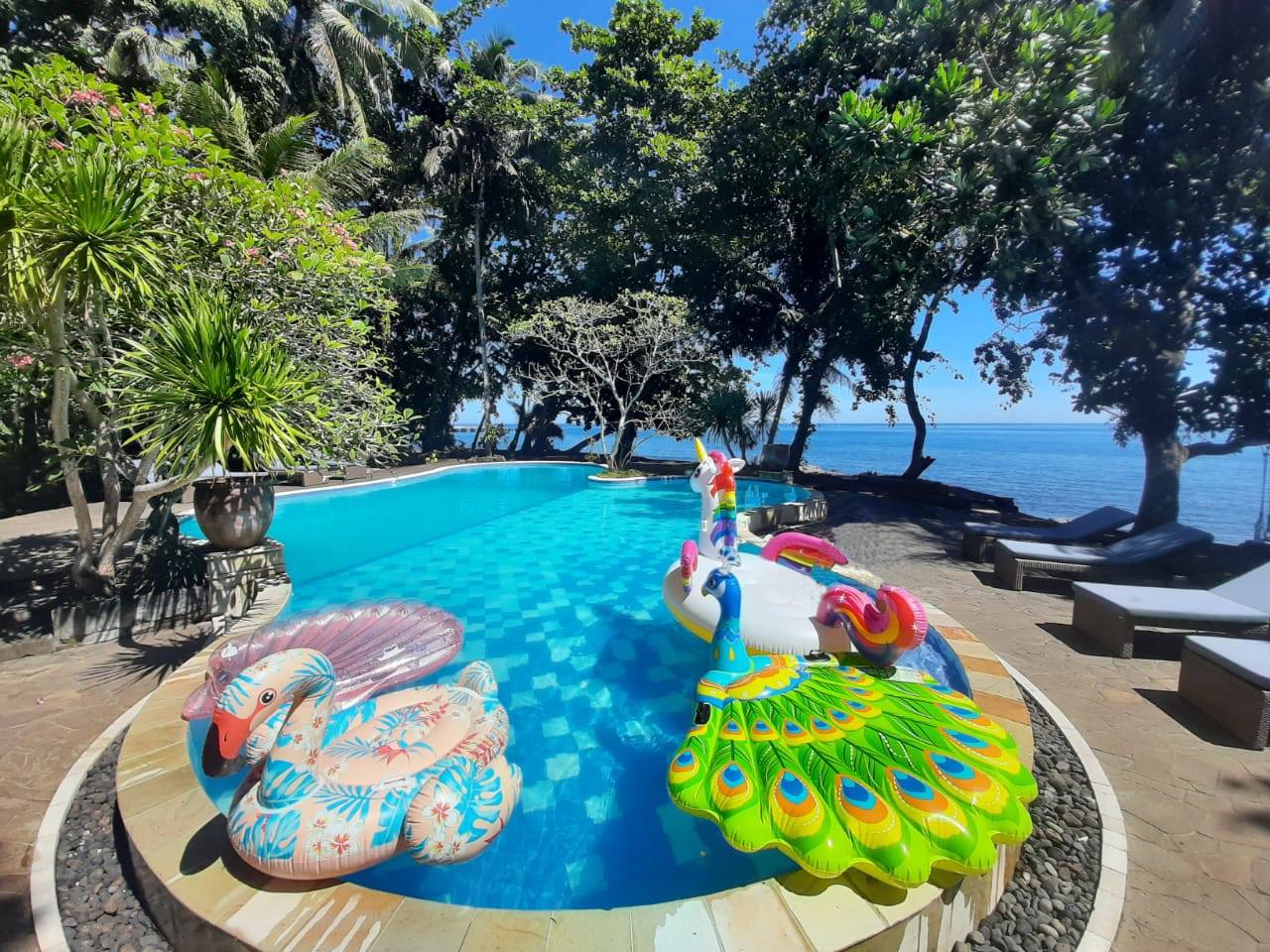Battle of the House Reefs – Part 2
3 Sixty Minute Dives: The Battle of the House Reefs is On – Part II
Our intrepid Blogger continues the quest to find the winner of the “Battle of the House Reefs” as the Murex Manado, Murex Bangka and Lembeh Resort House Reefs are put to the test. Read this Battle of the House Reefs – Part 2 to see how Murex Manado stands up to the challenge….
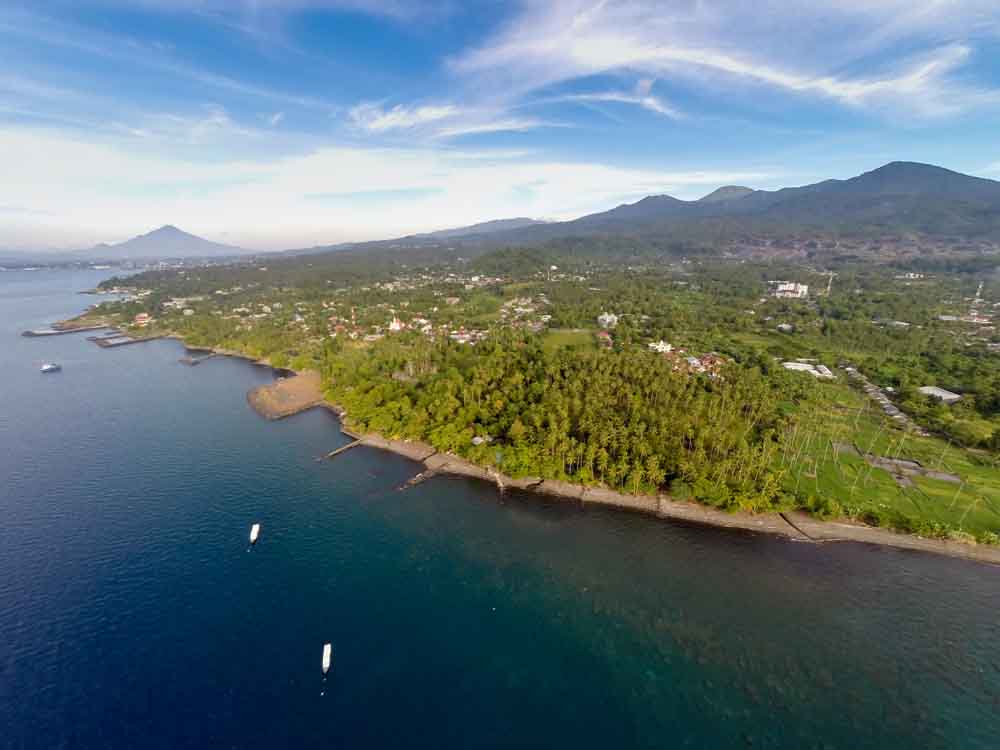
Murex Manado House Reef
Battle of the House Reefs – Part 2 Murex Manado House Reef
Dive Info:
Max depth of dive: 17 meters
Max depth of site: 25 meters
Tide: Dived at low tide just starting to rise
Visibility: 25 meters (usual is 10 – 15 meters)
Current: None – Mild
Temperature: 27 degrees
Log Book
Topography here is very different to Bangka, this is a black sand site scattered with natural coral bommies and rock formations as well as man-made reef balls and formations. There is a very wide shallow reef top which eventually gives way to a sandy slope.
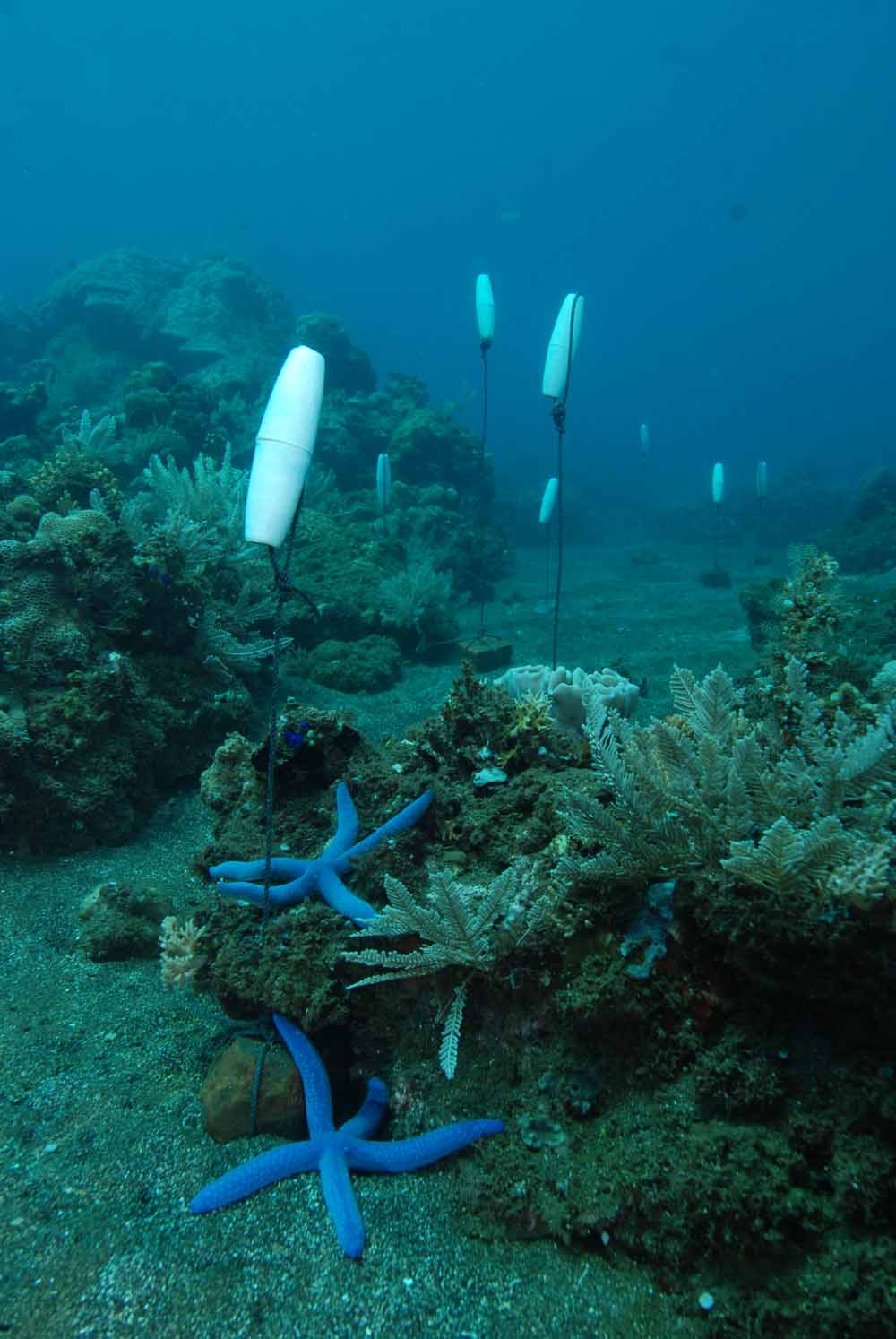 Entry here is from the shore where the boats park for loading and unloading. I waded out until it was a meter deep and then put on fins and swam a little further on the surface. When the water depth reached around 1.5 meters I went under and started swimming out towards the main buoy – the sand barely slopes at first but the first directional marker was easy to see as it is close to shore (and I had Pim, the manager of Murex Manado with me, to point the way). The reef top is very wide and runs from a couple of meters to around 6 meters deep before it slopes proper and this is quite a long way out. The big reef flat is a definite positive though – within a couple of minutes of descending I made my first find, a beautiful 2.5cm sapsucking slug which was black with turquoise stripes and red rhinophores (annoyingly undescribed when I checked in the reference book!), within a minute of that were two panda nudibranch (Funeral jorunna).
Entry here is from the shore where the boats park for loading and unloading. I waded out until it was a meter deep and then put on fins and swam a little further on the surface. When the water depth reached around 1.5 meters I went under and started swimming out towards the main buoy – the sand barely slopes at first but the first directional marker was easy to see as it is close to shore (and I had Pim, the manager of Murex Manado with me, to point the way). The reef top is very wide and runs from a couple of meters to around 6 meters deep before it slopes proper and this is quite a long way out. The big reef flat is a definite positive though – within a couple of minutes of descending I made my first find, a beautiful 2.5cm sapsucking slug which was black with turquoise stripes and red rhinophores (annoyingly undescribed when I checked in the reference book!), within a minute of that were two panda nudibranch (Funeral jorunna).
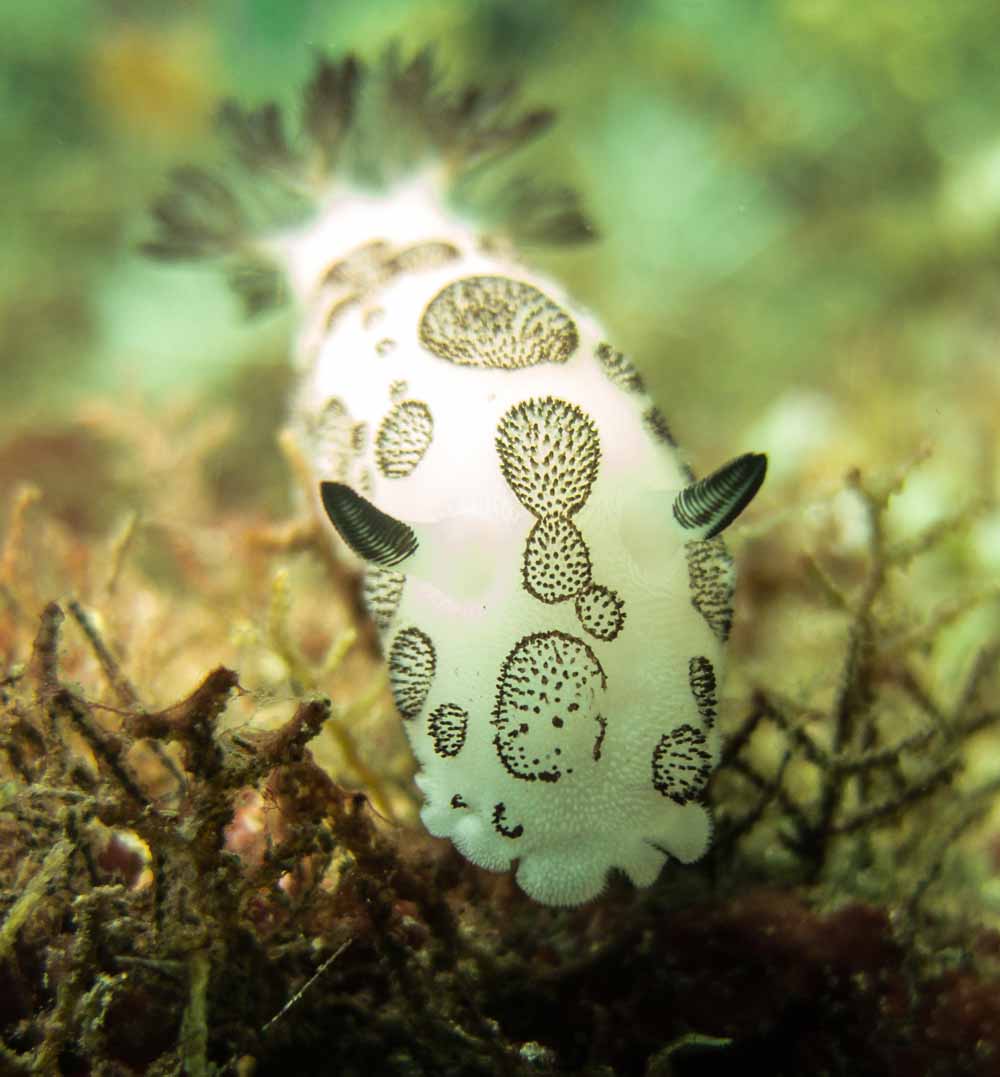
Panda Nudibranch
We continued along the reef top heading to the right side of the bay as you look out from the shore – my intention was to swim right and then drop down the slope, swim back to the left and out at the entry point, thereby swimming one big loop. This turned out to be a nice route – there are lots of reef blocks along the way, small bommies and rock formations all of which harbour a variety life and photography subjects. Within another minute or so I had an unexpected encounter with a juvenile banded sea snake (actually spotted by Pim) which was happily foraging in some corals before making a dash up to the surface – had my camera not been stuck on macro this would have been an amazing photo opportunity!
The next “special” find was a small juvenile black ribbon eel which was (unfortunately) very camera shy and disappeared back into it’s hole – no problem though as immediately after that I found a bommie with numerous critters; commensal shrimp, banded cleaner shrimp, Kubaryana’s nembrotha perched on the top and huge swollen phyllidia on the sand at the base. I stopped to snap some images and we started our “deep” (17 meters) swim back along the front of the bay. Within minutes of turning there was a section of scattered reef balls – these boasted white eyed moray eels and they had some small branching corals growing on them in which I was able to find spotted guard crabs – later Pim found a coral marble shrimp – only a couple of centimetres long but with fantastic markings and colours. As the dive continued a huge barrel sponge caught our attention and within its creviced edges were two hairy squat lobsters – one very small one – less than 1cm and one larger one – almost 2cm’s. Heading back up the sand I started looking at the small soft corals and hydroids that populate the sand and this turned out to be worthwhile – on one soft coral I found five redline flabellina –the largest of the five was only around 1 cm long. I also spotted several beautiful soft corals that were closed up – I didn’t check them due to time but candy (soft coral) crabs are a common find here.
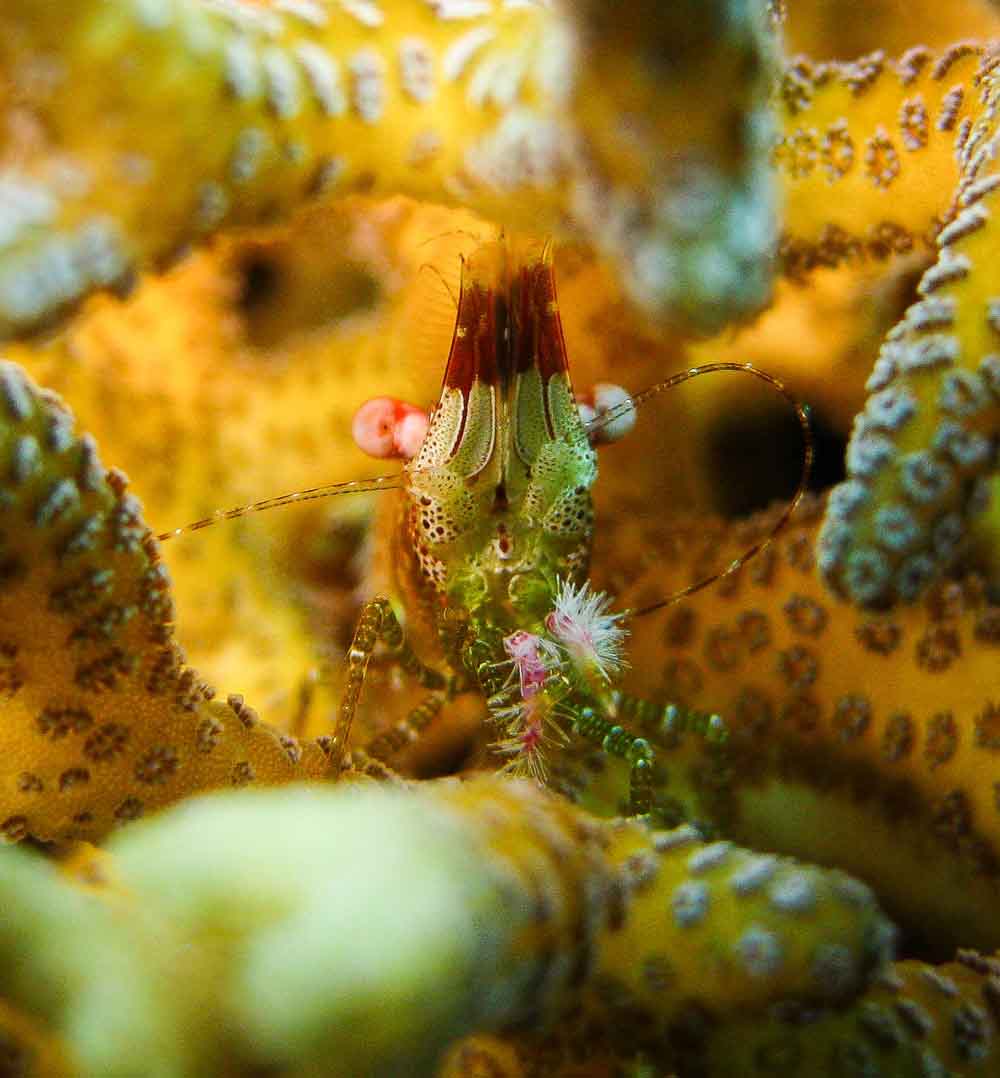
Coral Marble Shrimp
As we arrived again on the wide reef flat it was already 55 minutes of dive time which meant we had timed it perfectly – a long safety stop whilst swimming back in towards the shore. This was the only time when I thought navigation could be a potential issue – the wide reef flat does give you scope to go a long way off course if you are not exactly on point. Look out for the markers and if you are in doubt at all it is easy enough to complete the safety stop and then take a quick glance out from the surface to check you are on course for the boat area. If you know that navigation is not your strong point then take a Murex Guide with you – they are amazing spotters too!
Wow, I was surprised! The Manado House Reef was the House Reef I actually expected least from and I was completely wrong. For nudibranch species it was amazing along with shrimps and critters. Entry and exit is easy, current is not an issue as long as you start by swimming into it. Navigation is easy too but beware of the flat reef top which may be disorienting. There is an excellent range of corals and reef inhabitants too.
Lembeh has really got to a lot to compete with – Bangka was stunning with its soft corals and colours and Manado’s critters have now won me over in this Battle of the House Reefs – Part 2.
So, with just Lembeh left to go – look out for “The Battle of the House Reefs is On – Part III” coming soon…….


